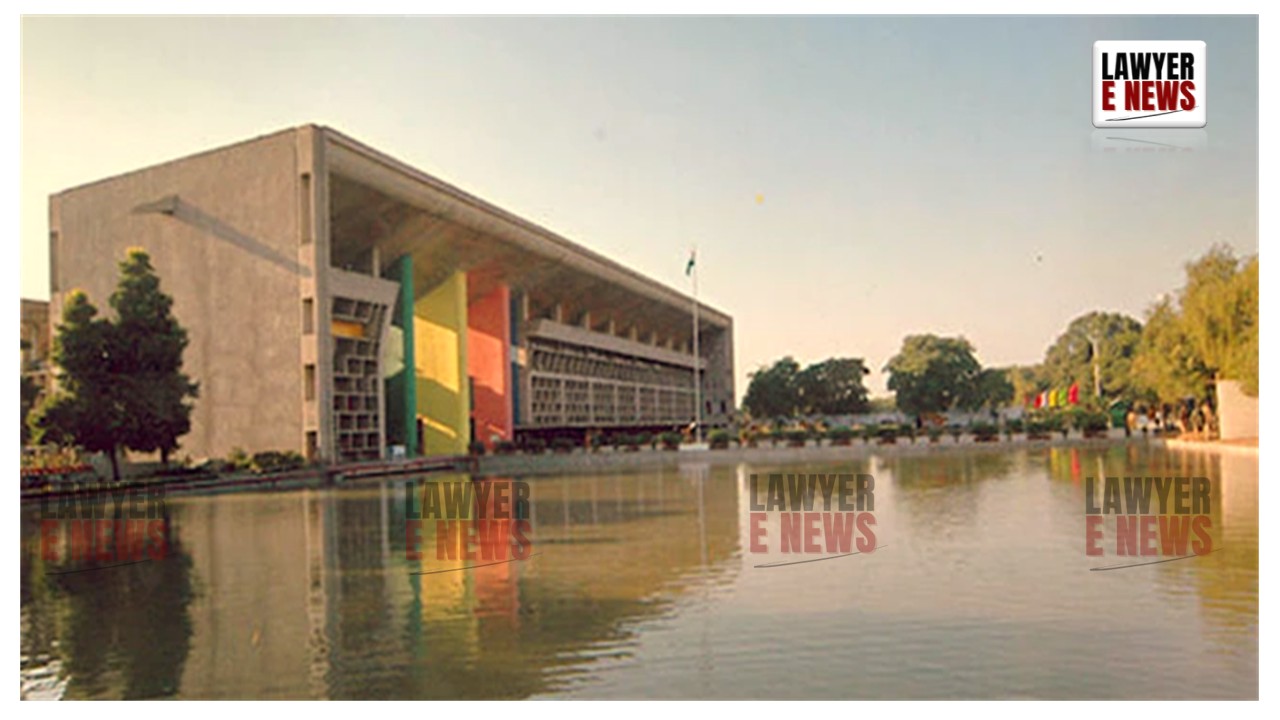-
by Admin
17 December 2025 4:09 PM



"Judicial admissions under Section 58 of the Indian Evidence Act, coupled with unrefuted documentary and testimonial evidence, proved the ancestral nature of the property and the plaintiff’s adoption" – Punjab and Haryana High Court
On January 27, 2025, the Punjab and Haryana High Court in Shyam Sunder v. Hari Ram & Others (RSA No. 3972 of 2016) upheld the concurrent findings of the lower courts decreeing a suit for partition of an ancestral Haveli in favor of the plaintiff. The court dismissed the appeal filed by the defendant-appellant, Shyam Sunder, who had challenged the plaintiff’s adoption by Asha Ram and the ancestral nature of the disputed Haveli.
Justice Nidhi Gupta affirmed the plaintiff’s entitlement to half of the ancestral property, noting that overwhelming evidence, including judicial admissions and official documents, corroborated both the ancestral nature of the property and the plaintiff’s adoption.
The litigation arose over a residential Haveli claimed as ancestral property by the plaintiff, Hari Ram, who sought partition and separate possession of his half share. The plaintiff asserted that Asha Ram, his adoptive father, had no biological issue and adopted him in 1962 through a giving-and-taking ceremony.
The appellant, Shyam Sunder (the plaintiff’s brother), contested the claim, arguing that the property was not ancestral, had been partitioned in 1976, and that the plaintiff was not Asha Ram’s adopted son. The Trial Court decreed the suit in the plaintiff’s favor on July 3, 2013, a decision affirmed by the First Appellate Court on February 17, 2016, leading to this second appeal.
The appellant argued that the plaintiff had failed to prove the ancestral nature of the Haveli. However, the court noted that the appellant had repeatedly admitted in testimony that the Haveli was ancestral. Justice Nidhi Gupta observed:
“The appellant has categorically admitted in his cross-examination that ‘Mutnaza Haveli dada lay hai,’ meaning the disputed Haveli is ancestral. This admission, under Section 58 of the Indian Evidence Act, dispenses with the need for further proof of the ancestral nature of the property.”
The court further held that the appellant’s claim of a prior partition in 1976 was baseless, as it was unsupported by any documentary evidence. “The alleged partition, although stated to have occurred in 1976, is not reflected in the revenue records or municipal records, further discrediting the appellant’s assertion,” the court remarked.
The appellant contended that the plaintiff’s adoption was invalid due to non-compliance with Sections 7 and 11 of the Hindu Adoption and Maintenance Act, 1956, which mandate the wife’s consent and prohibit adoption if the adoptive father already has a living son.
Rejecting the argument, the court held: “Section 7 of the Act requires the wife’s consent only if she is alive at the time of adoption. In this case, Asha Ram’s wife had predeceased the adoption. Similarly, Section 11 was not violated, as Asha Ram had no living sons when the adoption occurred.”
The court noted that the giving-and-taking ceremony during Dussehra 1962 was proved through the testimony of PW6, Sant Lal, the priest who conducted the ceremony. Justice Gupta emphasized, “Oral adoptions were customary during that time, and the ritual was corroborated by official documents referring to the plaintiff as Asha Ram’s adopted son.”
"Registered documents executed by the appellant bind him to the plaintiff’s status as Asha Ram’s adopted son"
The court relied heavily on official and registered documents in which the appellant himself referred to the plaintiff as Asha Ram’s adopted son. These included:
• Ex.PW2/A: A power of attorney executed by the appellant in 2001, explicitly identifying the plaintiff as Asha Ram’s adopted son.
• Ex.PW4/A: A sale deed dated January 17, 1996, signed by the appellant, similarly referring to the plaintiff as Asha Ram’s adopted son.
• Ex.PW4/B: A gift deed executed by Kedarnath, the plaintiff’s biological father, in 1988, identifying the plaintiff as Asha Ram’s adopted son.
• Ex.PW7/B: The plaintiff’s ration card, listing him as Asha Ram’s son.
The court remarked: “The appellant cannot now deny the plaintiff’s adoption when he has, through multiple registered documents, referred to him as Asha Ram’s adopted son. These admissions are binding and conclusive.”
The appellant’s claim that the property was partitioned in 1976 was dismissed due to lack of evidence. The court observed:
“No documentary evidence, such as revenue or municipal records, supports the claim of partition. The appellant’s own admission that the Haveli remained undivided further contradicts this assertion.”
The court also noted that the appellant failed to explain why the alleged partition was not recorded in municipal records, stating, “Had there been a genuine partition, it would have been reflected in the revenue and municipal records, which are entirely silent on the matter.”
Reiterating the principle of judicial admissions under Section 58 of the Evidence Act, the court emphasized that the appellant’s statements regarding the ancestral nature of the property and the plaintiff’s adoption were binding. Justice Gupta observed:
“Judicial admissions are conclusive unless rebutted. The appellant’s categorical admissions regarding the ancestral nature of the Haveli and the plaintiff’s status as Asha Ram’s adopted son negate the need for further proof.”
Dismissing the appeal, the court held that the plaintiff had irrefutably proved his entitlement to half of the ancestral Haveli as Asha Ram’s adopted son. The appellant’s claims were found to be unsubstantiated and contrary to his own admissions and documentary evidence.
“The appellant’s arguments are baseless and contradicted by overwhelming evidence, including his own judicial admissions and official documents. The concurrent findings of the lower courts require no interference,” the court concluded.
Date of Decision: January 27, 2025
